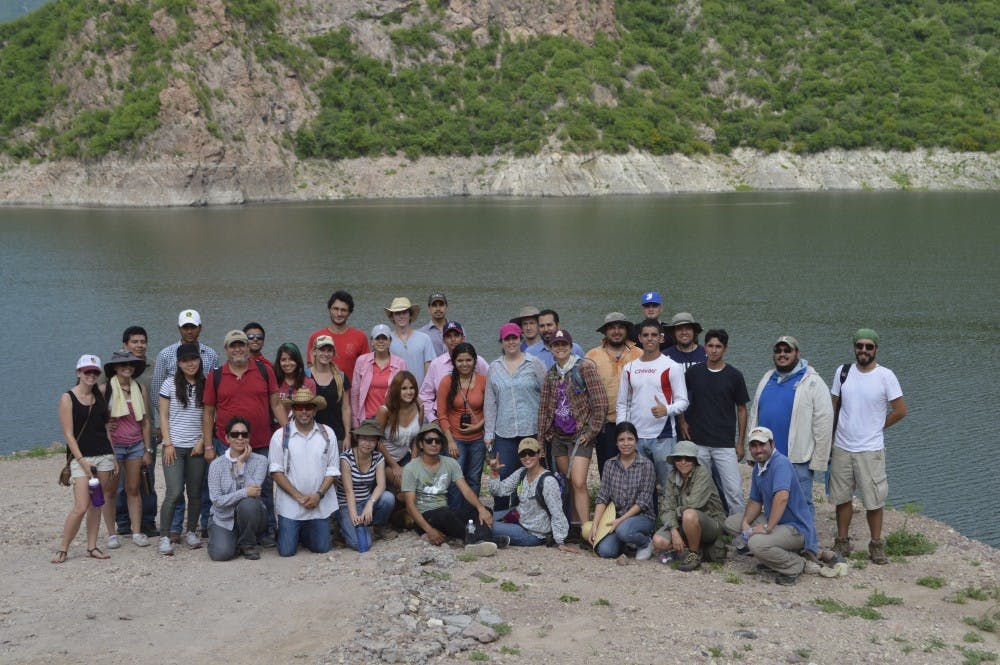 Photo courtesy of Dr. Enrique R. Vivoni.
Photo courtesy of Dr. Enrique R. Vivoni.
Professor Enrique Vivoni teaches by this simple principle: Hands-on experience cements ideas that are presented in the classroom by making real-world connections and getting away from the monotony of PowerPoint lectures.
Vivoni, a professor in the School of Earth and Space Exploration, followed this principle when he started the US-Mexico Border Water & Environmental Sustainability Training program nine years ago.
"Students need to see to understand," he said.
The program allows for students, both undergraduate and graduate from a variety of programs at ASU and other universities in Mexico, to travel to Sonora, Mexico, for two weeks to evaluate the issues the state faces with water and learn how to address water management issues in Sonora.
This past August was the second year of the program at ASU, and Vivoni said the students are getting valuable experience working in the field.
He is adamant about the importance of working with different cultures in new places and its value to the learning process.
"We expose (students) to a culture in a different place with a different political and economic structure," he said.
The program started in 2004, when Vivoni was teaching in New Mexico.
Student spent the first week of the trip visiting water managers in Sonora, Vivoni said.
An aqueduct built in April caused a conflict between two of Sonora's major cities, the urban center Hermosillo and the more rural Ciudad Obregón. The aqueduct provided the water Hermosillo needed and allowed the city to stop rationing water.
This is ideal for Hermosillo, but not for Ciudad Obregón, which needs the water for farming. With the aqueduct's construction, Ciudad Obregón loses some of its water supply.
The aqueduct's construction without regard to the people's opinion was an issue that the students and faculty on the trip were fortunate to explore, Vivoni said.
Students got to meet with water managers, agencies in charge of water and large water consumers like farmers on both sides of the issue.
Environmental engineering graduate student Nolie Pierni was on the trip with the 34 other faculty members and students.
"It was interesting to learn the different sides of it and relate it to where we're from," she said.
The issue the students were learning about is a sensitive one. There is a huge divide between the two cities, and it was important for the future scientists to not form their opinions before gathering all the available facts, Vivoni said.
"We got both perspectives, and the students were able to come to their own conclusion based on the evidence provided by both sides about what they thought (a) what was the best solution, (b) the more sustainable outcome and (c) could this had been dealt with in a different way?" he said.
Adam Schreiner-McGraw, a graduate student studying and researching hydrology, was on the trip this summer. The trip for him was a reminder as to why he is doing the research he is doing.
"It was putting a face and giving motivation to the research that we're doing," he said. "We could see that these people really needed more information about the water cycle."
The group was not there to solve the problem of the aqueduct, Vivoni said, as it is already in place and functional and not much is going to change about that. Their job was to gather information so issues like this don't arise in the future, he said.
There is always a fight about water, Vivoni said, no matter where it is.
"Our job is to inform this decision-making process," he said. "The link between science and decision making, we don't know how to do very well. Mexico, here, anywhere."
The program is in its last year next year, but Vivoni said he would like to see it continue because of how important it is to students and how much they get out if it.
"What we can do is put in place the science and engineering so the future conflict is a more informed, presumably a more amicable outcome," he said.
Reach the reporter at kloschia@asu.edu or follow her on Twitter @KarenLosch




